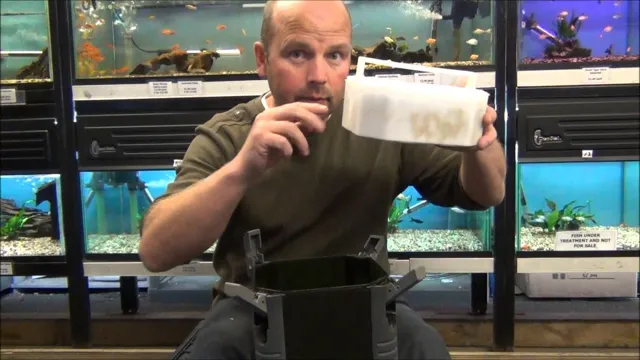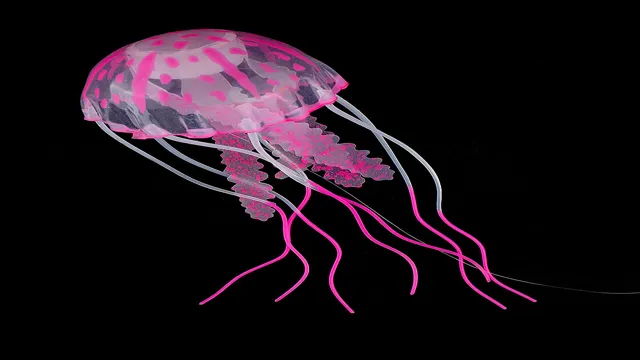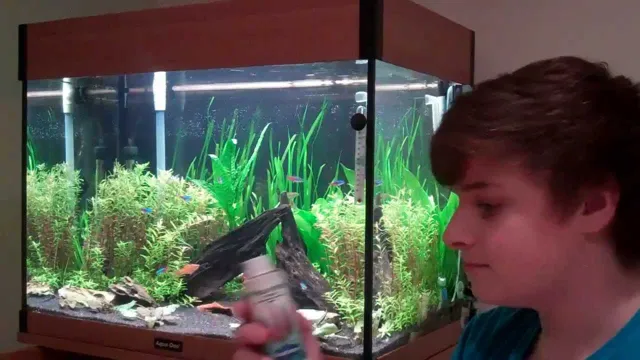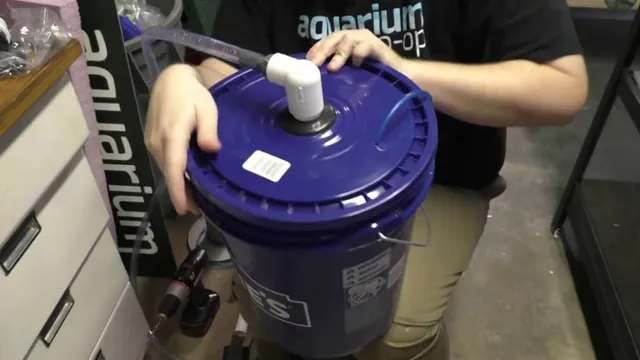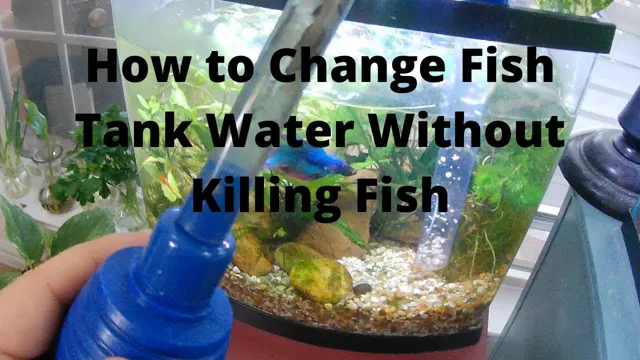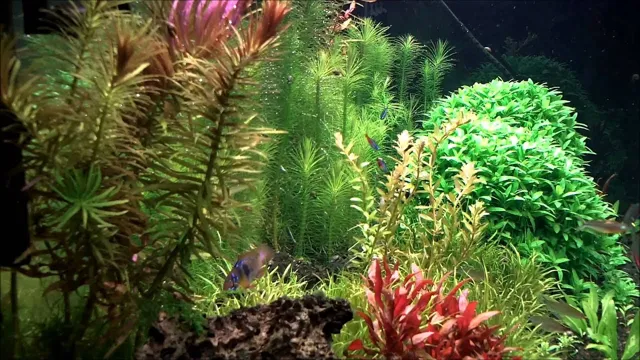Do you know that copper, although essential in small amounts, can be toxic to aquatic creatures in large concentrations? Copper is commonly found in aquariums due to its presence in fish food, tap water, and pipes. However, excessive copper levels can arise from medication or equipment, which can harm your aquarium inhabitants. So, how can you remove copper from your aquarium? Fortunately, there are various ways to get rid of copper in your tank.
Removing copper is crucial to maintaining a healthy and thriving aquarium. In this blog, we will guide you on how to remove copper from your aquarium safely and effectively. We will explore why copper is harmful, the symptoms of copper toxicity, and the different methods to eliminate it from your tank.
We will also discuss steps on how to prevent copper buildup in the future. Keep reading to learn how to protect your aquatic pets and ensure they are living in a safe environment.
Understanding the Risks of Copper in Your Aquarium
If you own an aquarium, it’s important to understand the potential risks of copper in the tank. Copper can be harmful to aquatic life, particularly invertebrates, and even small amounts can cause serious health issues and even death. Some common sources of copper in aquariums include tap water, certain medications, and copper-based algae treatments.
So, how do you remove copper from your aquarium? The first step is to identify the source of the copper and eliminate it. You can also use activated carbon or a specialized copper-removal media in your filtration system to help remove any remaining copper from the water. Testing your water regularly can also help you catch any potential copper build-ups before they become a serious issue.
By understanding the risks of copper and taking proactive steps to remove it from your aquarium, you can help ensure the health and well-being of your aquatic pets.
The Effects of Copper on Your Fish and Plants
Copper is a mineral that can have both positive and negative effects on your aquarium. While it’s an essential element for several fish species and plants, it can also be toxic if its levels exceed a certain limit. Copper can enter your aquarium’s ecosystem through various sources, including tap water, fish food, medication, and aquarium decorations.
Therefore, it’s crucial to test and maintain proper copper levels in your aquarium. High levels of copper can cause several health problems for your fish, including lethargy, loss of appetite, and difficulty breathing. Similarly, it can stunt the growth of your plants and cause their leaves to turn brown or yellow.
Therefore, it’s crucial to understand the risks of copper in your aquarium and take necessary measures to prevent any adverse effects from happening. It’s always better to be safe than sorry when it comes to the well-being of your aquatic friends.
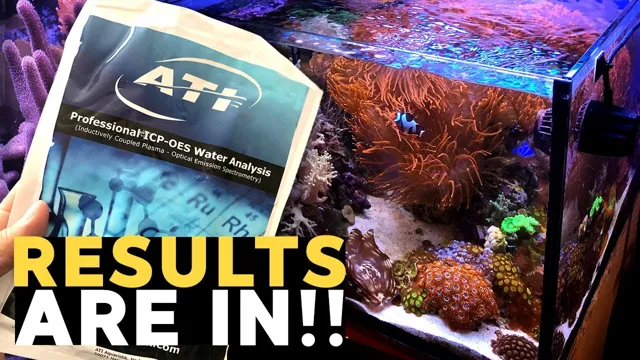
Sources of Copper in Your Aquarium
Copper is widely used in the aquarium industry because of its effectiveness in treating a variety of fish diseases. It can be found in several sources such as medications, water treatments, and fish food. However, excessive levels of copper can be toxic to fish and other aquatic organisms.
It can also accumulate in the aquarium’s substrate and decor, creating a long-lasting risk of poisoning. Understanding the potential risks of copper in your aquarium is crucial to maintaining a healthy aquatic environment. As a responsible aquarium owner, you must carefully monitor the copper levels in your tank, avoid using excessive amounts of copper-based products, and provide adequate filtration to remove any copper-based residue.
Remember, it’s always better to prevent the problem than to treat it after it’s too late.
Testing Your Water for Copper
If you suspect that your aquarium water contains copper, one of the first steps is to test your water for copper levels. Copper can be toxic to aquatic life, and high levels can cause harm or even death to your fish and plants. You can purchase copper test kits from your local pet store or online supplier to check the copper content of your water.
If your test reveals high copper levels, it’s time to act quickly to remove it from your aquarium. One solution is to do a partial water change to dilute the copper concentration in your tank. Additionally, utilizing activated carbon or specialized ion-exchange resins can help remove copper ions from the water. (See Also: How to Clean Outside of Aquarium Glass in 6 Easy Steps)
Take care to select the appropriate products to use, and be sure to follow the instructions provided. With the right steps and caution, you can successfully remove copper from your aquarium and maintain a healthy environment for your aquatic pets.
Using Test Kits to Measure Copper Levels
If you’re concerned about the levels of copper in your household water supply, there are simple test kits available that can alleviate those fears. Copper is an essential mineral and a common material in household plumbing systems, but too much of it in your drinking water can lead to health issues. Test kits for measuring copper levels are readily available and easy to use.
By adding a few drops of reagent to your water sample and comparing the color to a chart, you can quickly and accurately determine the concentration of copper in your water. It’s important to maintain healthy copper levels in your home’s water, as excess copper can cause digestive problems, liver damage, and other health issues. Use a test kit to ensure that your water is safe and free of harmful contaminants.
Interpreting Your Test Results
If you suspect that your water may contain copper, it’s important to have it tested to ensure that it’s safe for you and your family to drink. Copper is a common metal that can leach into water from pipes and other sources, and it can be harmful to your health if consumed in high levels. You can purchase a test kit online or at a home improvement store to check your water for copper.
Once you have your results, it’s important to interpret them correctly to determine if your water is safe to drink. If your levels are too high, consider contacting a professional to help eliminate the source of the copper. Don’t take any chances with your health when it comes to your drinking water, and make sure to test for copper regularly.
When to Test Your Water for Copper
If you are experiencing symptoms of copper toxicity, such as gastrointestinal problems or anemia, it may be time to test your water for copper levels. Additionally, it is important to test your water if you live in an older home with copper pipes or if you live near a mining or industrial area. High levels of copper in your water can have negative effects on your health and can also cause damage to your plumbing fixtures and appliances.
If you suspect that your water may be contaminated with copper, it is best to have it tested by a professional lab. Regular testing can help ensure that your water is safe and healthy for you and your family to use.
Methods for Removing Copper from Your Aquarium
Have you ever encountered copper in your aquarium? It can be harmful to your fish and other aquatic creatures, so it’s important to remove it as soon as possible. There are several methods you can use to get rid of copper in your aquarium. One way is to add activated carbon to your filter.
This can help absorb the copper and other impurities from the water. You can also do a partial water change to dilute the copper concentration. Another method is to use a copper remover product.
These products are specially formulated to bind with the copper and remove it from the water. It’s important to follow the instructions carefully when using these products, as they can also remove beneficial minerals from the water. Overall, preventing the introduction of copper is the best approach.
But if it does get into your aquarium, take action quickly with one of these methods to keep your aquatic pets safe and healthy.
Water Changes and Filtration
When it comes to removing copper from your aquarium, there are a variety of methods you can use. One of the simplest ways is to perform regular water changes. This will help dilute the copper levels in your tank, reducing the overall toxicity.
However, if the copper levels in your water are extremely high, a more aggressive method may be needed. One option is to use specialized filtration media designed to remove heavy metals like copper. These types of media can be found at most aquarium supply stores and are simple to install. (See Also: How to Calculate Substrate for a Hexagon Aquarium: A Step-by-Step Guide)
Another option is to use activated carbon in your filter, as it has been shown to adsorb copper ions. It’s important to note that while these methods can be effective, prevention is always the best policy. Avoid using copper-containing treatments or foods, and keep a close eye on any copper pipes or other equipment that may be used in or around your aquarium.
By taking these steps and being proactive, you can help ensure a healthy and safe environment for your aquatic pets.
Using Chemical Treatments to Remove Copper
If you are struggling with high copper levels in your aquarium, chemical treatments can be an effective solution. One method involves using activated carbon, which works by absorbing copper ions from the water. Another option is adding a copper chelating agent, which binds with the copper and removes it from the water.
It’s important to follow instructions carefully and monitor levels with a test kit, as overdosing can be harmful to your aquatic life. It’s also important to address the source of the copper, such as examining your aquarium decorations or checking the copper content in your tap water. By taking action to remove copper and prevent future contamination, you can help ensure a healthy and thriving aquarium environment for your aquatic pets.
Preventing Copper Buildup in Your Aquarium
Copper buildup in your aquarium can be harmful to your fish and other aquatic creatures. The best way to prevent this buildup is to use natural materials in your aquarium, such as live plants and natural rock. If you suspect that there is already copper buildup in your aquarium, there are a few ways to remove it.
One effective method is to use a copper removal product that is specifically designed for aquariums. The product will work to remove any excess copper and ensure that your aquarium is safe for your fish. Additionally, regular water changes can help prevent copper buildup.
By changing out a portion of the water in your aquarium on a regular basis and using a good filtration system, you will be able to maintain a healthy and safe environment for your aquatic pets. Overall, taking good care of your aquarium and staying proactive about preventing copper buildup will help keep your fish happy and healthy for years to come.
Avoiding Copper Contaminants
If you’re an aquarium enthusiast, it’s important to prevent copper buildup in your tank. Copper is toxic to fish and can be caused by things like copper pipes or decorations. To avoid copper contaminants, it’s best to use PVC pipes and decorations made from materials like plastic or resin.
If you do need to use copper-based medications for your fish, make sure to follow the dosage instructions carefully and remove any leftover medication afterwards. Additionally, it’s important to regularly test your aquarium water to ensure there aren’t any dangerous levels of copper present. By taking these preventative measures, you can help your fish thrive in a safe and healthy environment.
Maintaining Proper Water Chemistry
Maintaining proper water chemistry in your aquarium is crucial for the health of your fish, plants, and overall aquatic environment. One common issue that can arise is the accumulation of copper in the water, which can be harmful to your aquarium inhabitants. Copper can enter the aquarium from sources such as tap water and fish medication.
To prevent copper buildup, it is important to regularly test your water for copper levels and limit the use of copper-containing products. Additionally, using a water conditioner that detoxifies heavy metals like copper can also be beneficial. Remember, keeping a watchful eye on your aquarium’s water chemistry can prevent potential issues and provide a thriving environment for your aquatic pets.
Choosing Copper-Free Decorations and Equipment
Preventing copper buildup in your aquarium is crucial for the health of your aquatic inhabitants. Copper is toxic to fish and other aquatic animals, and it can accumulate in aquariums over time, leading to long-term harm to your pets. One way to prevent copper buildup is to choose copper-free decorations and equipment.
This means selecting items like rocks, plants, and gravel that do not contain copper or other heavy metals. Additionally, it’s essential to choose equipment like filters and heaters that are made with copper-free materials. Taking these small steps can make a big difference in maintaining a healthy and safe aquatic environment for your pets. (See Also: How to Make Fake Aquarium Grass: A Complete Guide for DIY Enthusiasts)
And remember, prevention is always better than a cure when it comes to aquariums, so take proactive measures like regular water testing and cleaning to keep your aquarium copper-free.
Conclusion: Keeping Your Aquarium Copper-Free
In conclusion, removing copper from your aquarium requires a bit of chemistry knowledge and a lot of patience. Remember, prevention is always the best cure, so it’s crucial to monitor your water quality regularly and avoid using copper-containing additives. If you do find yourself with copper contamination, rest assured that there are remedies available, such as water changes, activated carbon, and specialized copper-removing products.
As Albert Einstein once said, “In the middle of every difficulty lies opportunity,” so use this challenge as an opportunity to become a more knowledgeable and competent aquarist. Happy fishkeeping!”
FAQs
Why is copper harmful to aquariums?
Copper is harmful to aquariums because it can damage the gills, liver, and nervous system of fish, and can also harm beneficial bacteria and other organisms that are essential to a healthy aquarium ecosystem.
What are the signs that there is too much copper in my aquarium?
Signs that there is too much copper in your aquarium include lethargic or distressed fish, loss of appetite, and changes in color or behavior. In severe cases, fish may become disoriented or die.
How does copper get into my aquarium in the first place?
Copper can enter your aquarium through tap water, medications or treatments used to treat fish or plants, and certain types of fish food. It can also leach from pipes or other materials used in the aquarium setup.
Can I test the copper levels in my aquarium?
Yes, there are aquarium test kits available that can measure the copper levels in your aquarium water. It is important to regularly monitor these levels to ensure they are within safe parameters for your fish and other organisms.
How do I remove copper from my aquarium?
There are several methods to remove copper from aquarium water, including using activated carbon, conducting water changes, and using specialized products like copper-removing resins. It is important to follow the instructions carefully and choose a method that is appropriate for your specific situation.
How can I prevent copper from becoming a problem in my aquarium?
To prevent copper from becoming a problem in your aquarium, always use a water conditioner when adding water to your tank, avoid using medications or treatments that contain copper unless absolutely necessary, and choose fish food that does not contain copper as an ingredient.
What should I do if I suspect there is too much copper in my aquarium?
If you suspect that there is too much copper in your aquarium, it is important to take action immediately. Begin by conducting a water change and removing any sources of copper from the tank. If symptoms persist or worsen, consult with a veterinarian or aquarium specialist for further guidance.


